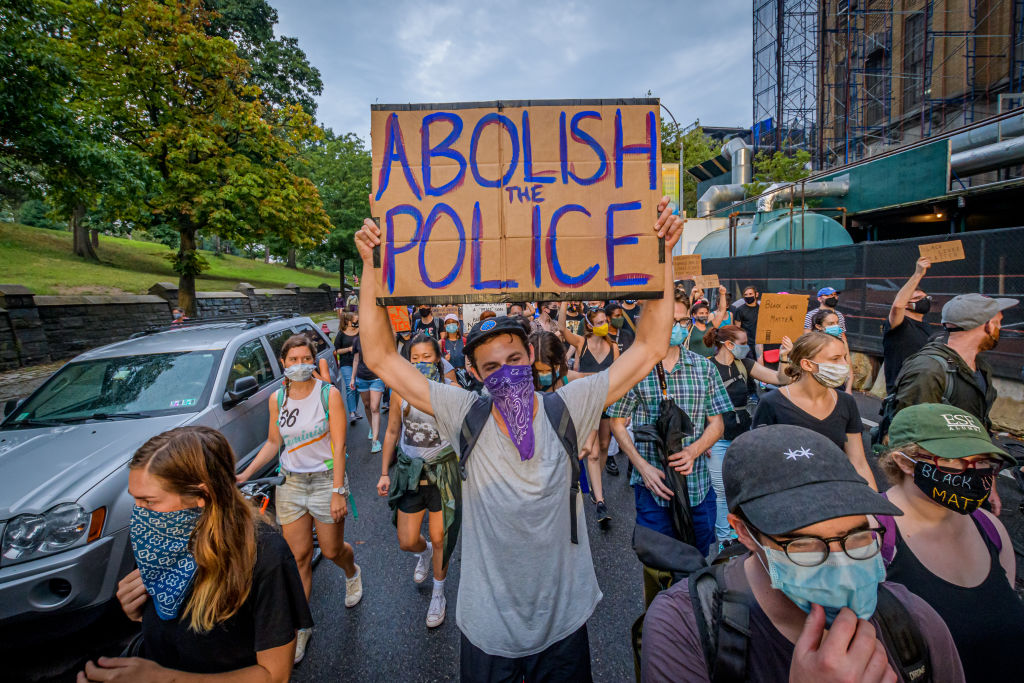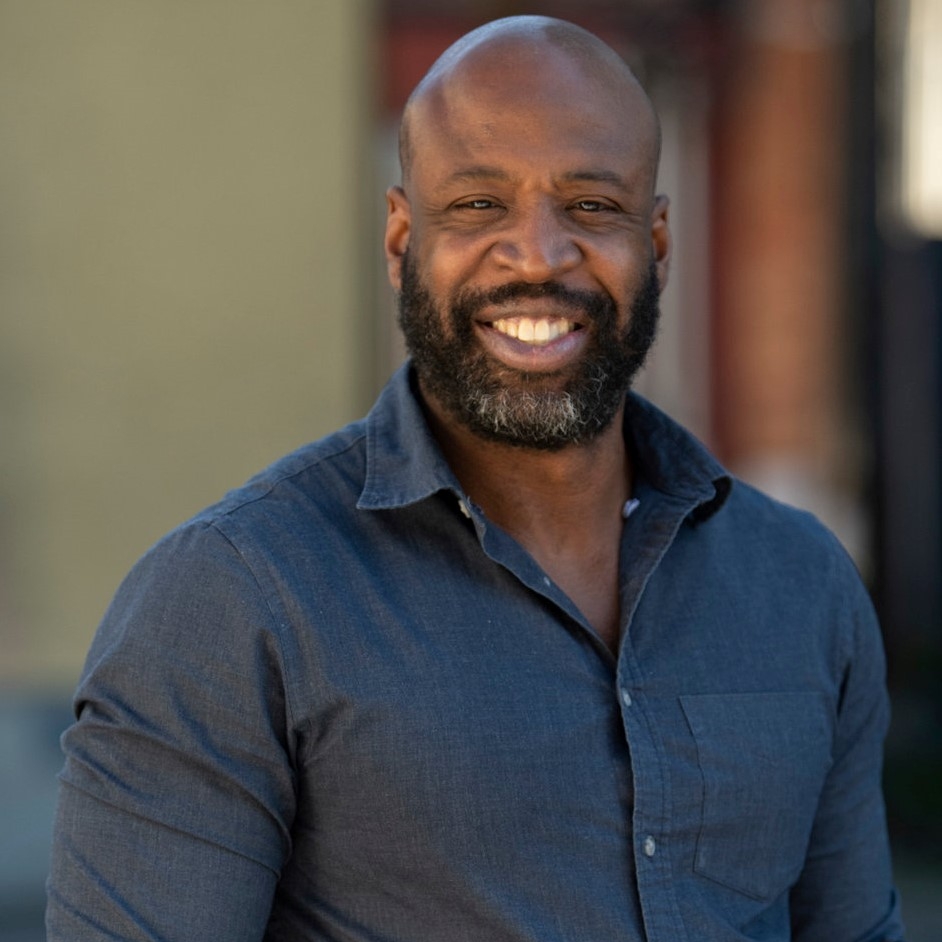In “The Parable of the Frozen Bird,” a small bird was flying south for the winter. Unfortunately, the weather would prove much for a bird of its size; it succumbed to the harsh cold and fell to the ground. As if to add insult to injury, a cow came along and defecated on the bird. Although this seemed like an unfortunate turn of events, the manure actually warmed the bird so well that it began to sing for joy. The bird’s song caught the attention of a cat, who found the bird, dug it out of the manure, and promptly ate it.
The moral to the story: Not everyone who gets you out of crap is your friend.
The story is an apt warning to downtrodden individuals and groups who are offered help by powerful people. Those powerful people can see the downtrodden as ripe for manipulation, a convenient means to an end. I call this kind of manipulation “pawning,” the using of an individual or group for one’s own purposes.
This has been a constant but relatively unacknowledged aspect of black American history since colonial times. I want to describe how pawning manifests and develops in contemporary America, and how marginalized groups can avoid such exploitation moving forward.
The “pawning” of black Americans.
Pawning can take the form of casting marginalized groups as unwitting foot soldiers in championing some political ideologies, or holding them up as examples of the need for particular policies. While this pawning can be addressed through classical liberal ideals–individuality, civil society, and common human values–it is important to define and illustrate instances of pawning to clarify it as an exigence to be addressed.
Many examples of pawning fall under the category of what legal scholar and critical race theorist Derrick Bell called “interest convergence”: the idea that the “interests of blacks in achieving racial equality will be accommodated only when it converges with the interests of whites.”
Bell associates interest convergence with a white/non-white dichotomy in which the former always subordinates the latter, though, in actuality, an oppressor/oppressed dichotomy need not be race-based. (This is where I break with Bell on this term.) The following instances reveal that incidents sold as benefits to blacks were actually done in the political interests of whites; black interests, in actuality, were secondary at best.
Take, for instance, “Dunmore’s Proclamation.” In 1775, John Murray, the earl of Dunmore and governor of Virginia, offered freedom to any slave that would join the British in opposition to the rebels. He gave enslaved Africans hope, but Dunmore could not have cared less about them; his proclamation was an offensive tactic and nothing more. Dunmore had turned away enslaved people volunteering their services in exchange for freedom months before the proclamation. However, when his number of troops dwindled, he felt that offering freedom to slaves was his best option. Ironically, Dunmore’s proclamation created more rebels out of former British loyalists who were frightened by the thought of free and vengeful Africans.
In essence, Dunmore’s proclamation pushed many whites previously unopposed to British rule to join the revolution and, ultimately, preserve slavery for almost another century. (The British Empire abolished the slave trade in 1807.)
Many whites in the Antebellum and Civil War eras also had ulterior motives. Besides protecting their own salvation in the eyes of God (holding people in bondage was seen as decidedly un-Christian), abolitionists, including William Lloyd Garrison and George Foster, saw actual slaves as props to aid in emancipation—and not sovereign “ends” in themselves.
Frederick Douglass wrote in his autobiography, My Bondage and My Freedom, that his white fellow abolitionists would refer to him as less than human, an object. Referring to those who fashioned themselves allies to the slaves, Douglass wrote, “I was generally introduced as ‘chattel”—a ‘thing’—a piece of southern ‘property’—the chairman assuring the audience that it could speak.” (Emphasis mine.)
White abolitionists rightly wanted to end slavery, but would not go as far as to grant blacks equality. They wanted slavery to end, but they wanted white supremacy to live on.
The 20th century would see its own versions of “pawning.” Bell himself references Brown vs. Board of Education as a prime example of interest convergence. He saw school desegregation as motivated not by moral sensibility, but by political and economic interests: Desegregation would prove to the 1950s world that capitalism, not communism, was the morally superior system, and desegregation would eradicate the charge that even a black soldier’s sacrifice to his country in World Wars I and II could not earn him the right to be treated as an equal. What’s more, segregation and its concomitant troubles were seen as a kind of obstacle to the economic growth in the South.
Even Thomas Sowell, the black conservative often contrasted with scholars like Bell and other critical theorists, acknowledges a kind of interest convergence when discussing desegregation in sports. In his book Applied Economics: Thinking Beyond Stage One, he argues that the desegregation of baseball was done not for moral reasons, but for competitive and economic ones. Once the Brooklyn Dodgers acquired Jackie Robinson, “the cost to other teams of keeping out other black players rose sharply.” Why? As Sowell points out, starting in 1953, the National League Most Valuable Player award went to a non-white person for seven consecutive years.
So, “had other teams not followed the lead of the Dodgers in hiring black players, all these MVP stars would have become Dodgers, giving Brooklyn a virtual monopoly of National League pennants and perhaps world championships,” writes Sowell. The league had to desegregate for the sport to achieve a parity of talent. “Their racial attitudes may not have changed,” he writes, “but the cost of translating those attitudes into discriminatory exclusions had changed drastically.”
Perhaps the main issue is that black Americans are not just seen as victims, but as what I call a “deficit” culture. Black Americans are seen as so deficient in certain areas that their manipulation can be justified as long as a particular deficiency is met.
Dunmore and even the abolitionists didn’t see blacks–even Frederick Douglass–as equal, but they were trying to free slaves. Desegregating schools and professional baseball may have been done for ulterior reasons, but segregation still ended. Although interest convergence is a kind of pawning, mutual benefit does occur.
But interest convergence is just the least dastardly form of pawning. The most dangerous kind of pawning occurs when desperate and precarious groups are convinced to participate in questionable behavior to achieve a goal. For example, members of the Communist Party saw black Americans as ready-made foot soldiers for their economic and ideological goals. Blacks were treated as valuable members of the party on a surface level, but they were often used strategically, not engaged morally, to bolster communism in America.
Black ex-Communists Manning Johnson and Julia Brown both wrote books on the party’s manipulation of black Americans. Johnson makes the point in Color, Communism, and Common Sense—A True Story that a black person was not truly respected in the Communist Party, but was seen only as “a political dupe,” and that blacks were collectively seen as “expendables in the struggle for power.”
Johnson writes that blacks, even those given leadership positions in the party, could not do much without the approval of a white authority figure—who Johnson dubbed an “overseer.” Johnson confesses that he didn’t realize until he was deeply involved with the party “that just and seeming grievances are exploited to transform idealism into a cold and ruthless weapon against the capitalist system—that this is the end toward which all Communist efforts among Negroes are directed.”
Black ex-Communist Julia Brown shared an equally disquieting experience. In I testify: My years As An F.B.I. Undercover Agent, Brown writes that “white Communists would fawn all over Negroes they wanted to lure into the Party. Once hooked, the new enrollees were promptly assigned to those certain cells where Negroes were tolerated.”
When Brown tried to discuss the internal racism of the Communist Party, a chairman of the party expressed his disdain and saw her protest as direct criticism of the party as a whole. She was told she was “too reactionary” and needed to “watch her step.”
Lastly, examples of black pawning can be seen in contemporary anti-racist initiatives, often put forth by people following ideologies derived from Marxism. Critical social justice pits whites against blacks in perpetual conflict, often ending with the usurpation of institutional power and the installation of collectivist attitudes and values. Critical pedagogy, too, sees blacks, especially students, as useful vessels to spread propaganda with little tolerance of student individuality, hopes, and dreams. (I’ve written about this phenomenon here and here.)
Ultimately, a considerable amount of questionable behavior is being done in black people’s collective name. Less rigorous education standards, the squelching of free speech in various institutions, and the perpetuation of a thriving but ineffective diversity, equity, and inclusion industry are all done for the apparent sake of black dignity and well-being. At the same time skills valuable to both fulfillment and societal success are deemed “racist” if expected from non-whites (e.g., reason, punctuality, delayed gratification, etc). All one has to do to attack foundational values is to call them racist or—perhaps more to the point—anti-black.
A pawner’s secret weapons: the social truth and the virtuous lie.
The more ignoble kind of pawning differs from interest convergence in a key way: by emphasizing social truth over empirical truth. Empirical truth is demonstrative, based on facts and grounded in reality. Social truth, according to rhetoricians Catherine Helen Palczewski, Richard Ice, and John Fritch, consists of “those beliefs and values that do not refer to some objective reality, but to social reality—those beliefs about what is right that people have arrived at together.”
A statement only has to sound like it could be true, believable, and probable based on historical precedents. Thus, the idea that many unarmed black people are killed daily by cops holds together because, socially, the idea that cops go after black people more viciously than other races has been normalized. However, the empirical truth is that the average number of unarmed blacks killed by cops annually is below 20. And so calls to “defund the police” persist even as empirical data showing that such efforts are actually harming black Americans.
Social reality is fueled by what classics professor Jake Mackey calls the “virtuous lie.” Unlike Plato’s noble lies—untruths perpetuated to motivate a group of people to adopt a particular social order—virtuous lies “are empirically-flawed claims — espoused as empirically-sound and authoritative by those who propagate them — that further a social justice agenda made by some academics, activists and partisan media outlets on the left.”
Where the noble lie may be seen as a tactic of social cohesion, a virtuous lie may be understood as a tactic of liberation—not from oppression, but from responsibility.
The virtuous lie perpetuated by pawners is one in which minorities are free from personal responsibility because the lie implicitly states, “None of your failures are your fault; society is constructed to make sure you fail.”
The virtuous liars, if believed, become saviors of sorts and, if ambitious enough, can convince the lied-to to do their bidding in exchange for erasure of a perceived cultural deficit, like dignity and fulfillment. This is why victim narratives are so powerful, and why, for those who practice such pawning, the social reality of the narrative must always trump the material reality of the world.
Lest you think I am committing a kind of virtuous lie myself, this quote from Congresswoman Alexandra Ocasio-Cortez provides a perfect example. When caught giving factually incorrect information about government spending, she replied, “If people want to really blow up one figure here or one word there, I would argue that they’re missing the forest for the trees. I think that there’s a lot of people more concerned about being precisely, factually, and semantically correct than about being morally right.”
Of course, giving false information like this should never be allowed or encouraged, but CNN’s Chris Cillizza makes a point most salient for this essay, “Being factually accurate and morally right isn’t an either/or situation. You can do both!” Nevertheless, Ocasio-Cortez, as she admitted, was not concerned with the truth. She was content with the social truth, one that could cultivate a moral righteousness, that fuels a victim narrative, undergirded by a virtuous lie.
Combatting pawning.
Cillizza’s point—that something can be moral and factual simultaneously—also provides, through implication, a good strategy to avoid pawning: At all times, we should strive to be both morally and empirically correct. Why? Empirical correctness can better stave off manipulation. Grifters prey on downtrodden people’s hopelessness and indignities, and the downtrodden may see hope and an otherwise illusive dignity in those grifters’ promises.
However, evidence must accompany hope and the promise of a more dignified life. Thus, we should normalize the insistence of both moral righteousness and empirical truth. If claims and strategies are to be believed and embraced, would-be benefactors should demand clear proof of their efficacy along with the promise of improvement, hope, and dignity. A corollary to this tactic is to make sure evidence that disproves an iteration of a virtuous lie is not ignored.
For example, empirical evidence around implicit bias training is quite damning to the social truth that these exercises are needed to save minorities from dejection and misery. Musa Al-Gharbi, Chris Ferguson, and many others have provided an abundance of evidence that implicit bias training does not work. Those organizing these trainings, however, are shielded from scrutiny by the social truth of ubiquitous victimization, and some see the pawning of minorities as a viable way to achieve whatever real goal they have. Therefore, any group’s best defense against these “pawn artists,” as it were, is to find evidence that backs up their claims and interpretations.
Even the concept of “proof” has been demonized in some social justice circles. But for now, I want to reiterate that what can look like help and allyship could be an instance of pawning. Scrutinizing a social truth for empirical fidelity can better ensure protection from these race grifters.
Of course, other strategies exist that involve the bolstering of necessary institutions for social uplift (the family unit, education, etc.), but these strategies are weakened substantially if not grounded in reality. Whether academic faculty and administrators, politicians, or corporate trainers, a lack of concern for the truth should be a red flag. Simply put, we must always question accuracy and authenticity, especially from our would-be saviors.







Please note that we at The Dispatch hold ourselves, our work, and our commenters to a higher standard than other places on the internet. We welcome comments that foster genuine debate or discussion—including comments critical of us or our work—but responses that include ad hominem attacks on fellow Dispatch members or are intended to stoke fear and anger may be moderated.
With your membership, you only have the ability to comment on The Morning Dispatch articles. Consider upgrading to join the conversation everywhere.